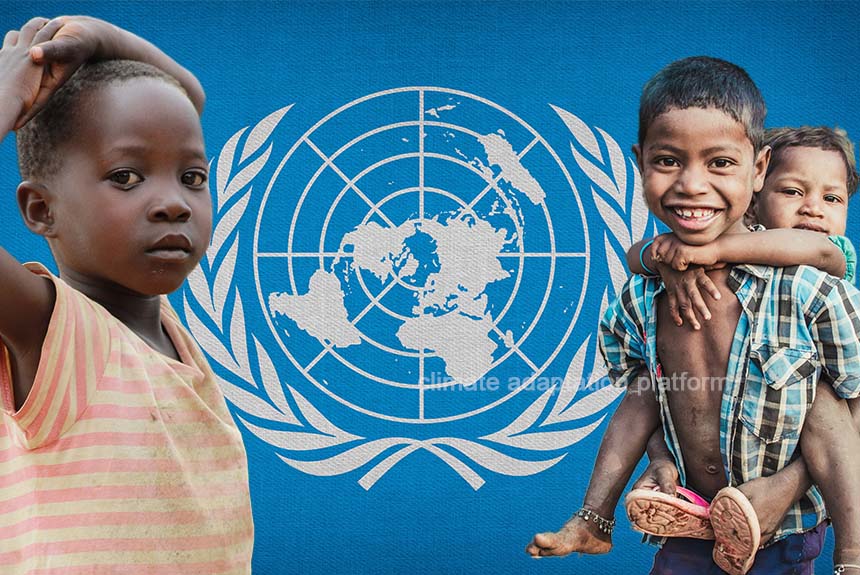Children are also impacted and vulnerable to climate change, and governments must protect them against it.
On 28 August 2023, the United Nations Child Rights Committee released an authoritative guidance known as General Comment No. 26 that “specifies the legislative and administrative measures States should urgently implement to address the adverse effects of environmental degradation and climate change on the enjoyment of children’s rights, and to ensure a clean, healthy, and sustainable world now and to preserve it for future generations” (Urgent action, 2023).
“This general comment is of great and far-reaching legal significance,” said Ann Skelton, Chair of the Committee, emphasising, “as it details States’ obligations under the Child Rights Convention to address environmental harms and guarantee that children can exercise their rights (Urgent Action, 2023).
This encompasses their rights to information, participation, and access to justice to ensure that they will be protected from and receive remedies for the harms caused by environmental degradation and climate change” (Urgent Action, 2023).
The Committee on the Rights of the Child (CRC) consists of 18 independent experts that monitor the implementation of the Convention on the Rights of the Child by its States parties. The Convention has 196 state members to date.
According to The Conversation, the UN occasionally publishes a general statement – a new interpretation of the treaty they oversee. This statement also provides authoritative guidance to the 196 governments that ratified the UN Convention on the Rights of the Child. It also provides a globally agreed standard on which governments and businesses can base their assessment.
The UN’s press release states that the Comment came after two rounds of consultation by the Committee with States, national human rights institutions, international organisations, civil society, thematic experts, and children, where they received 16,331 contributions from children in 121 countries. Children shared the negative impacts of environmental degradation and climate change and asserted their right to live in a clean, healthy, and sustainable environment.
According to the United States Environmental Protection Agency, Children are more vulnerable to climate change’s health impacts because they are physically developing and more susceptible to climate-related hazards like heat and poor air quality.
They breathe faster, spend more time outdoors, and drink double the amounts of water than adults, making them more exposed to pollution and extreme weather events.
Additionally, as they are developing emotionally extreme events like major fires, storms, floods, and the necessity to move because these events could impact their mental health, and because they depend on adults, without their help, these hazards could also threaten their lives.
A UNICEF article highlights that children in poor and developing countries suffer more from extreme events and natural disasters. It says that around 1 billion children are at an ‘extremely high risk’ of climate change impacts.
The article shows examples of how children are affected by the effects of climate change: in Zambia, droughts are causing severe food insecurity. In Kabul, Afghanistan, exposure to pollution and cold weather makes children susceptible to respiratory infections like pneumonia.
In Dhaka, Bangladesh, children are exposed to severely polluted roads. Floods in Phnom Penh, Cambodia, expose children to waterborne diseases and food insecurity.
In the Democratic Republic of Congo, heavy rains have flooded several villages and farms, damaging their schools and affecting children’s education.
And in Fiji, Guatemala, Mozambique, South Sudan, and Zimbabwe, cyclones, landslides, and floods directly affect children.
Due to their status, children do not always have a legal standing in many countries. So, the Committee directs states to provide legal pathways for children to access justice for violating their rights associated with environmental harm.
“It (General Comment) specifies that States are obliged to provide legislative, regulative, and enforcement frameworks to ensure that businesses respect children’s rights and should require businesses to undertake due diligence regarding children’s rights and the environment. Immediate steps should be taken when children are identified as victims to prevent further harm to their health and development and to repair the damage done” (Urgent Action, 2023).
The Conversation, weighing in on the Comment, notes, “It’s not merely an aspirational statement. Rather, it’s a practical “how-to” guide to action. This document will help children, young people, and their advocates hold governments and others accountable for their decisions.”
Peleg (2023) says, “The general comment also identifies children as agents in their own lives. By extension, this means children have a right to participate in drafting environmental policies or laws that will affect them.”
Source:
Urgent action by States needed to tackle climate change, says UN Committee in guidance on children’s rights and environment. (2023, 28 August). United Nations. Retrieved from https://www.ohchr.org/en/press-releases/2023/08/urgent-action-states-needed-tackle-climate-change-says-un-committee-guidance
Peleg, N. (2023, August 28). Climate change threatens the rights of children. The UN just outlined the obligations states have to protect them. The Conversation. Retrieved from https://theconversation.com/climate-change-threatens-the-rights-of-children-the-un-just-outlined-the-obligations-states-have-to-protect-them-209587
Climate Change and Children’s Health. (2023, May 30). EPA. Retrieved from https://www.epa.gov/climateimpacts/climate-change-and-childrens-health#
The impacts of climate change put almost every child at risk. (2021, August 19). UNICEF. Retrieved from https://www.unicef.org/stories/impacts-climate-change-put-almost-every-child-risk



Leave a Reply